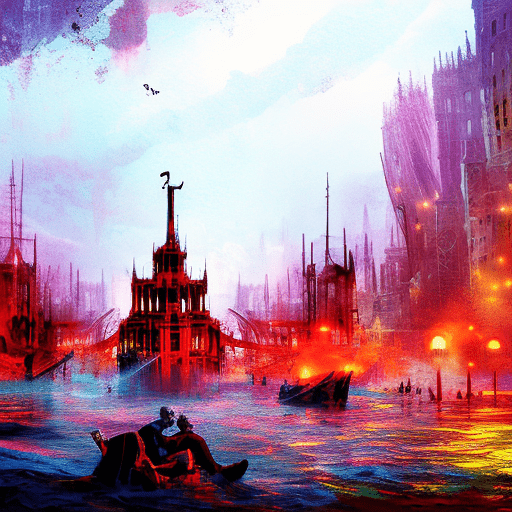One-line Summary:
A Tale of Two Cities is a historical novel by Charles Dickens that explores the themes of love, sacrifice, and redemption against the backdrop of the French Revolution.
The Plot:
Set in the late 18th century, A Tale of Two Cities tells the story of two cities, London and Paris, and the lives of their inhabitants before and during the French Revolution. The novel follows the lives of several characters, including the virtuous Lucie Manette, her father Dr. Alexandre Manette, the dissipated Charles Darnay, and the enigmatic Sydney Carton.
The story begins with the release of Dr. Manette from the Bastille, where he had been unjustly imprisoned for eighteen years. Lucie, who believed her father to be dead, is overjoyed to be reunited with him in London. As the plot unfolds, Lucie becomes the center of a love triangle between Charles Darnay, a French aristocrat, and Sydney Carton, a disillusioned English lawyer.
As tensions rise in France and the Revolution begins, Charles Darnay finds himself in danger due to his aristocratic lineage. He travels to Paris to help a former servant, Gabelle, who has been imprisoned. However, Darnay is arrested and accused of being a spy. Despite the efforts of his defense attorney, Sydney Carton, Darnay is sentenced to death.
In a selfless act of love, Carton switches places with Darnay and goes to the guillotine in his stead. Before his execution, Carton utters his famous last words, “It is a far, far better thing that I do, than I have ever done; it is a far, far better rest that I go to than I have ever known.”
The Themes:
Love and Sacrifice:
A Tale of Two Cities explores the transformative power of love and the sacrifices people are willing to make for those they care about. Lucie’s unwavering love for her father and her ability to inspire love and loyalty in others is a central theme throughout the novel. Sydney Carton’s ultimate act of sacrifice for the sake of Lucie and her family exemplifies the depth of his love and the redemption he finds through his selfless act.
Redemption and Resurrection:
The novel also delves into the themes of redemption and resurrection. Dr. Manette’s release from the Bastille symbolizes his rebirth and the opportunity for a new life. Similarly, Sydney Carton’s sacrifice allows him to find redemption and purpose in his otherwise wasted existence. The characters’ journeys from darkness to light highlight the possibility of personal transformation and the power of redemption.
Social Injustice and Revolution:
A Tale of Two Cities vividly portrays the social injustices and inequalities that led to the French Revolution. Dickens exposes the corruption and cruelty of the French aristocracy and the suffering of the lower classes. The Revolution serves as a backdrop for the characters’ personal struggles and highlights the destructive consequences of unchecked power and inequality.
Key Takeaways:
- Love and sacrifice can bring about personal transformation and redemption.
- Personal redemption can be found through acts of selflessness and sacrifice.
- Social injustice and inequality can lead to revolution and upheaval.
Memorable Quote:
“It is a far, far better thing that I do, than I have ever done; it is a far, far better rest that I go to than I have ever known.”
– Sydney Carton
In conclusion, A Tale of Two Cities is a timeless novel that explores themes of love, sacrifice, and redemption against the backdrop of the French Revolution. Dickens masterfully weaves together the lives of his characters, highlighting the power of love to transform individuals and the potential for personal redemption through selfless acts. The novel also serves as a critique of social injustice and inequality, shedding light on the destructive consequences of unchecked power. Through its compelling narrative and memorable characters, A Tale of Two Cities continues to resonate with readers, reminding us of the enduring power of love, sacrifice, and the possibility of personal redemption.












